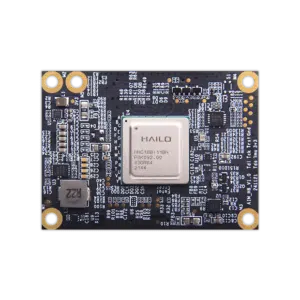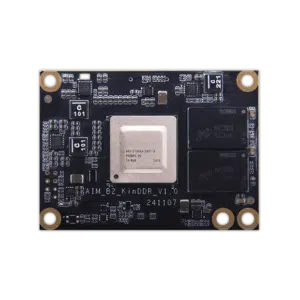Exploring the Features of Side AI Devices
Exploring the Features of Side AI Devices
Blog Article
A Beginner's Guide to Picking Side AI Devices
Discovering the Features of Side AI Products
Synthetic intelligence (AI) has reshaped many facets of our lives, and their application at the edge is creating waves in the computer industry. edge ai hardware which involves deploying AI types directly on units like devices, cameras, and smartphones, has appeared as a innovative approach to managing information and executing tasks. Unlike cloud-reliant AI systems, side AI works nearer to where in actuality the information is generated. This change delivers a number of benefits, placing side AI as a game title changer in areas ranging from healthcare to retail to professional automation.

Here, we'll explore some of the critical features of side AI products and how they're surrounding the future.
Quicker Control and Real-Time Reactions
One of the very most significant advantages of side AI is its power to process information domestically on the unit, as opposed to depending on a remote cloud server. The result? Faster control rates and real-time responses. For instance, in autonomous cars wherever every millisecond counts, edge AI may analyze environmental knowledge quickly to make conclusions, such as braking or steering modifications, minus the latency connected with cloud communication.
According to recent statistics, side AI products can lower decision-making latency by as much as 75% in comparison to cloud-dependent solutions. This makes them well suited for time-sensitive purposes, such as for instance video analytics in security or clever production systems.
Improved Data Solitude and Security
Solitude and knowledge protection are rising issues in a very attached digital world. Because side AI handles data running locally, sensitive data doesn't need certainly to travel to a cloud server, reducing the chance of interception or breaches. That localized method offers businesses more control around their data and assures compliance with solitude rules, specially in industries like healthcare and finance.
The raising adoption of these devices is largely driven by privacy-conscious policies and a preference for on-device computation. Studies indicate that by 2025, a lot more than 50% of AI-generated knowledge is going to be prepared at the edge to make sure higher data security.
Decreased Dependence on Net Connection
Cloud-based AI programs depend seriously on stable internet connectivity to operate effectively. edge computing box, on one other hand, thrive in conditions where connectivity might be unreliable or unavailable. Because side AI functions data on the device, it can perform easily without the necessity for constant access to a network.
For instance, in distant agricultural settings, edge AI devices can analyze weather designs, earth conditions, and crop data in real time to aid with predictive farming, even though disconnected from the internet. It's projected that edge research can reduce knowledge transfer charges by as much as 70%, which makes it more economically feasible in parts with restricted bandwidth.
Power Performance and Lower Fees
Edge AI devices are created to optimize energy consumption. By processing knowledge on-device, they lower the need to deliver massive datasets to cloud machines, cutting down both bandwidth consumption and power costs. That makes a substantial difference, especially in industries where power efficiency is a important factor.
Firms deploying side AI often experience paid down detailed costs because they steer clear of the recurring expenses connected with high-volume cloud storage and information transmission. Additionally, edge AI's low-power electronics ensures products is able to do complex computations without wearing methods, rendering it a sustainable selection for IoT (Internet of Things) ecosystems.
Designed AI Solutions for Unique Use Cases

Another key advantage of side AI is its ability to supply tailored answers for unique scenarios. Unlike simple cloud-based AI designs, edge AI systems may be fine-tuned to optimize efficiency for certain applications. For example, side AI devices found in retail settings can offer customized tips and seamless checkout experiences. Equally, in industrial automation, they can monitor gear efficiency and estimate preservation needs with high precision.
That versatility has led to an estimated 30% development in edge AI deployments before year, displaying its price in providing targeted solutions across varied industries.
Operating Innovation with Side AI
Edge AI units have reached the forefront of innovation, giving unmatched speed, privacy, and efficiency. By allowing real-time choices, safeguarding sensitive and painful data, reducing dependence on connection, and promoting energy savings, they offer a good, scalable answer for many different applications. Moreover, as technology advances, the integration of side AI is likely to increase, unlocking new possibilities and redefining how companies control AI.
Report this page